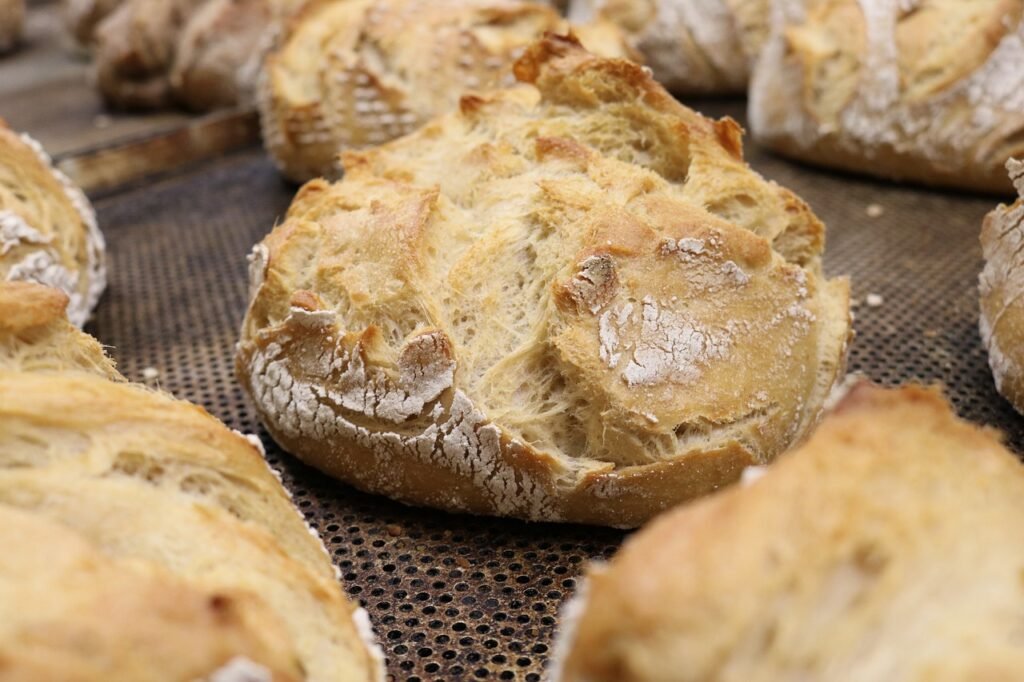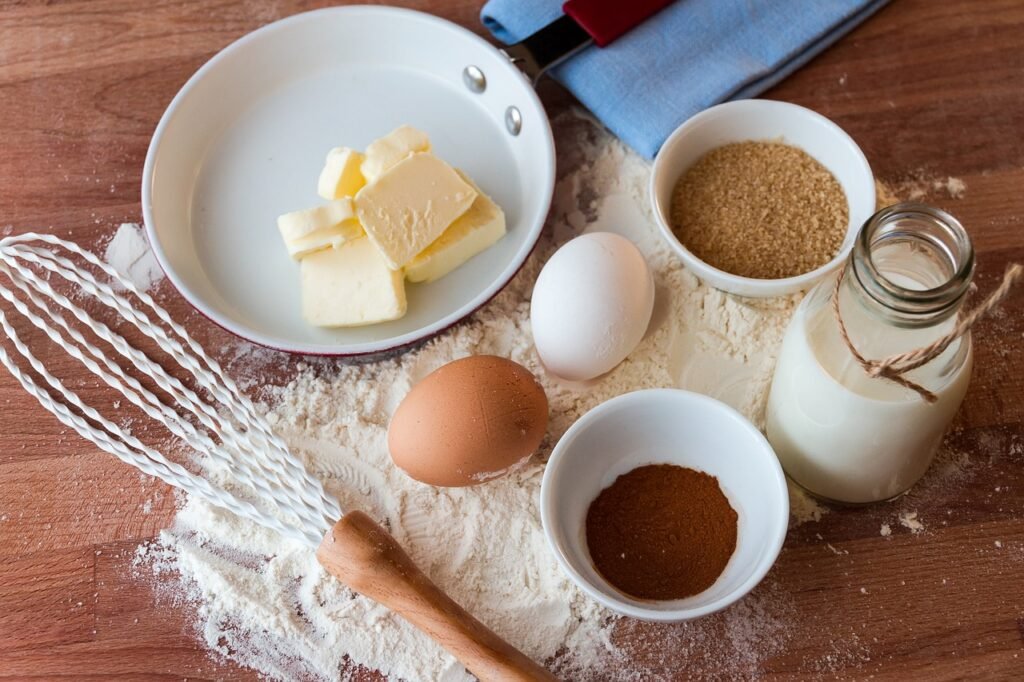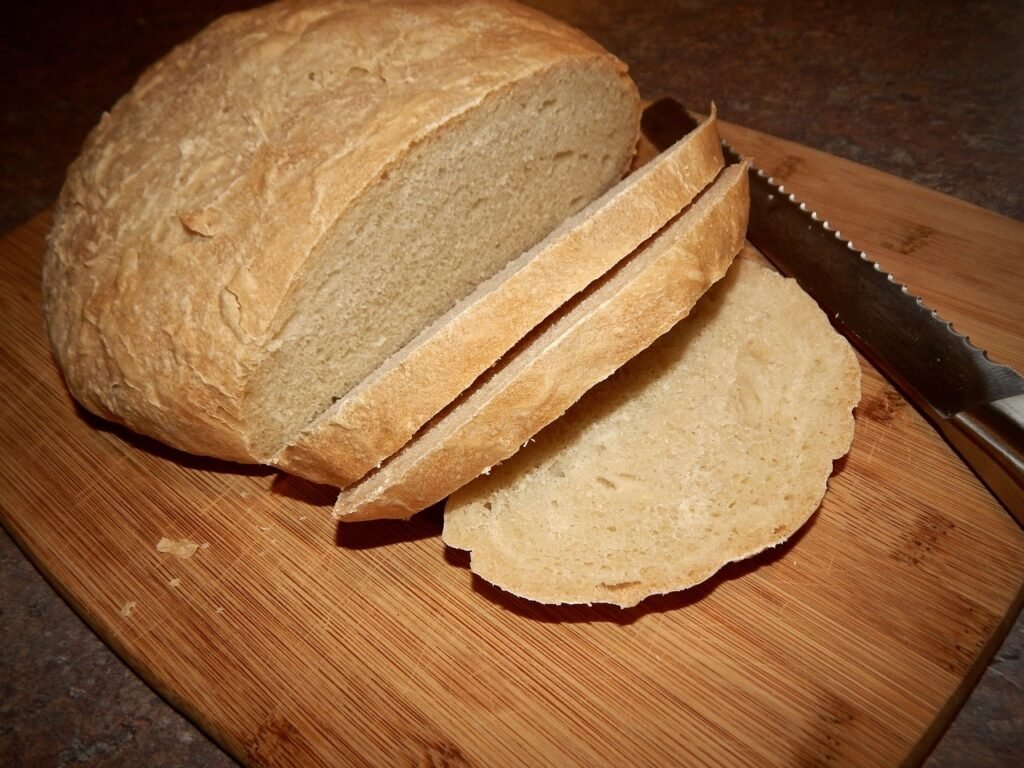In this article, we will provide a step-by-step guide on how to make delicious sourdough bread without using a starter. We will also discuss the nutrients in sourdough bread, serving suggestions, and other important tips for creating the perfect loaf of bread.

Why should I make sourdough bread without a starter?
Making sourdough bread without a starter is a quicker and simpler process compared to traditional sourdough baking methods. It allows you to enjoy the unique flavor and benefits of sourdough bread without the need to maintain a starter culture.
Our recipe will show you how to achieve that classic tangy sourdough taste using a few basic ingredients and easy steps.
Ingredients for Delicious Sourdough Bread
For this recipe, you will need:
- 3 cups all-purpose flour
- 1 1/2 cups warm water
- 1 1/2 tsp salt
- 1/4 tsp instant yeast
These simple ingredients will come together to create a flavorful and moist loaf of sourdough bread.

Steps to Make Delicious Sourdough Bread
- In a large bowl, combine the flour, warm water, salt, and yeast. Mix until a shaggy dough forms.
- Cover the bowl with a clean towel and let it rest at room temperature for 12-18 hours.
- After the resting period, preheat your oven to 450°F (230°C) and place a Dutch oven or baking pan in the oven to heat up.
- Once the oven is preheated, carefully transfer the dough into the hot Dutch oven or pan.
- Cover the Dutch oven with a lid and bake for 30 minutes. Then, remove the lid and bake for an additional 15-20 minutes until the bread is golden brown.
- Remove the bread from the oven and let it cool before slicing and serving.
Enjoy your freshly baked sourdough bread with butter, jam, or your favorite toppings!
Nutrients in Sourdough Bread
Sourdough bread is rich in essential nutrients such as fiber, protein, and B vitamins. The fermentation process involved in sourdough baking also makes it easier for your body to digest and absorb these nutrients.
By making your own sourdough bread at home, you can enjoy all the health benefits of this wholesome and delicious bread.

Serving Suggestions for Sourdough Bread
Sourdough bread can be enjoyed in a variety of ways:
- Toast slices of sourdough bread and top with avocado and a sprinkle of sea salt.
- Make a classic grilled cheese sandwich with sourdough bread and your favorite cheese.
- Use sourdough bread to make a flavorful bread pudding or stuffing for holiday meals.
- Serve sourdough bread alongside soups, stews, or salads for a hearty and satisfying meal.
Experiment with different serving ideas to discover your favorite way to enjoy sourdough bread!
Storage and Other Tips for Sourdough Bread
To keep your sourdough bread fresh, store it in a paper bag or bread box at room temperature. Avoid storing sourdough bread in the refrigerator, as it can dry out and lose its flavor.
If you want to freeze sourdough bread for later use, wrap it tightly in plastic wrap and place it in a freezer-safe bag. Thaw the bread at room temperature before reheating in the oven to maintain its texture and taste.
Conclusion
Creating delicious sourdough bread without a starter is a simple and rewarding process that allows you to enjoy the flavor and health benefits of this traditional bread. With a few basic ingredients and easy steps, you can bake your own loaf of sourdough bread at home and savor every bite.

FAQs about Sourdough Bread
1. Can I use whole wheat flour in this sourdough bread recipe?
Yes, you can substitute part or all of the all-purpose flour with whole wheat flour for a heartier loaf. Adjust the water amount as needed to achieve the desired dough consistency.
2. How long does sourdough bread stay fresh?
Sourdough bread can stay fresh for 2-3 days at room temperature when stored properly. After that, you can freeze the bread for longer storage and reheat it for a delicious taste.
3. Can I add herbs or seeds to the dough for additional flavor?
Yes, feel free to customize your sourdough bread by adding herbs, seeds, or other flavorings to the dough before baking. Experiment with different combinations to create your own unique bread recipe.
4. Is sourdough bread suitable for those with gluten sensitivities?
Sourdough bread made using traditional fermentation methods may be easier to digest for some individuals with gluten sensitivities. However, it is always best to consult with a healthcare professional before including sourdough bread in your diet.
5. Can I use this recipe to make sourdough bread in a bread machine?
This recipe is designed for traditional oven baking, but you can adapt it for a bread machine by following the manufacturer’s instructions for mixing, rising, and baking the dough. Enjoy homemade sourdough bread with the convenience of a bread machine!




